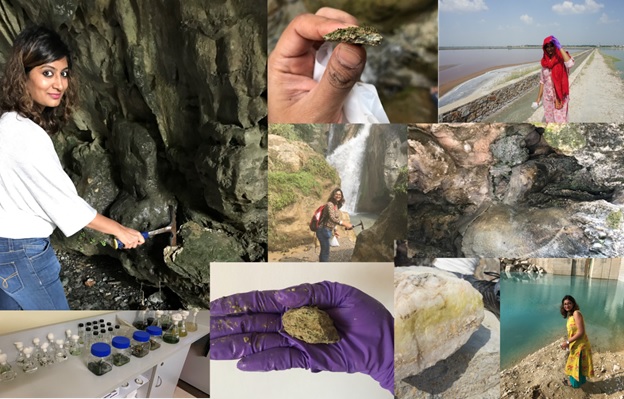
A young researcher has divulged the secret of how one of the smallest green algae called Picocystis Salinarum survives the harshest of conditions by resorting to physiological adaptation to highly saline-alkaline/hyperosmotic conditions. This may pave the way for a promising future candidate for biotechnological applications like microalgal bioproducts and increasing salt tolerance in plants.
Carbonates are of great interest to geoscientists, biologists, and climatologists due to their significance in the global carbon cycle. The process of biologically converting inorganic carbon into organic carbon, known as carbon fixation, is widely recognized as the paramount biogeochemical transformation on our planet.
Dr Jyoti Singh, an Inspire Faculty Fellow of the Department of Science and Technology (DST) who is passionate about extremophiles, explored microbial life, with a particular focus on photosynthetic cyanobacteria and microalgae thriving in carbonate dominated environments such as carbonate rocks and soda lakes. These microorganisms, incredibly versatile, hold the key to address critical questions pertaining to biogeochemistry, microbial diversity, evolution of life, astrobiology, environmental sustainability, biotechnology and beyond.
What intrigued the Faculty from the Department of Earth Sciences, Pondicherry University was the mystery behind the capability of one organism called P. salinarum found in hypersaline soda lake Sambhar, Rajasthan, to survive extreme environments. Though the alga had been widely found in saline-soda lakes around the world, it was spotted for the first time in India only in the Sambhar Lake.
Delving into the mystery of the resilience of P. salinarum, she along with her team probed the molecular mechanisms of adaptation in such polyextreme conditions. This they carried out through studying the changes in protein abundances through a high-throughput label-free quantitation based quantitative proteomics method.
Their team provided the first insights into the proteome of extremophilic alga P. salinarum revealing its tailored regulatory mechanisms for osmotic adaptation and proliferation in polyextreme conditions in soda lakes unraveling the basis of resilience in this not so known organism. The unique organism apparently enhances photosynthesis and ATP synthesis along with chaperone proteins as key response to high salinity-alkalinity. Enhanced photosynthetic activity exhibited by P. salinarum in highly saline-alkaline condition is noteworthy as photosynthesis is suppressed under hyperosmotic conditions in most photosynthetic organisms.
This discovery published in Frontiers in Microbiology (Section Extreme Microbiology) positions P. salinarum as a promising candidate for biotechnological applications and as a model organism for deciphering the molecular mechanisms of osmotic adaptation. The team has also harnessed the unique characteristics of this microalga for bicarbonate-based integrated carbon capture and biomass production. Research by this Inspire Faculty Fellow could help further development of sustainable and resource-efficient biotechnological processes.
Publication link: 10.3389/fmicb.2023.1059199

<><><><><>
SNC/PK



